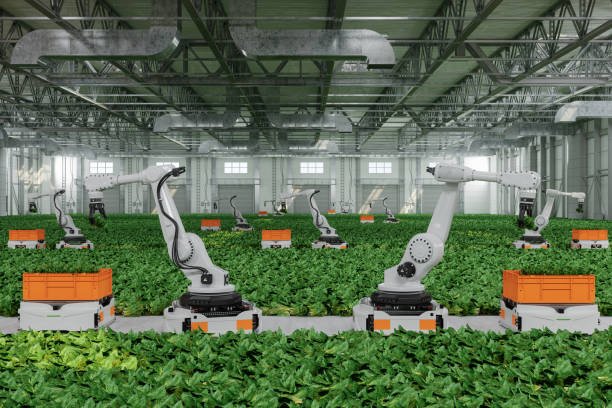What is smart agriculture and what is its future?
Smart agriculture, often referred to as precision farming, is a transformative approach that integrates technology and data-driven solutions to optimise various aspects of farming practices.
What is smart agriculture and what is its future?
future of smart agriculture
Smart agriculture, often referred to as precision farming, is a transformative approach that integrates technology and data-driven solutions to optimise various aspects of farming practices.
The future of smart agriculture has tremendous potential to address the challenges facing the agricultural sector, including the need for increased efficiency, sustainability and resilience. In this exploration, we'll look at the key components and potential advancements shaping the future of smart agriculture.
1. Internet of Things (IoT) and Connectivity
Smart agriculture relies heavily on the Internet of Things (IoT), where interconnected devices collect and share data. IoT devices will continue to proliferate in agriculture in the future, facilitating real-time monitoring and control of various parameters such as soil moisture temperature and crop health.
2. Precision farming techniques
Precision farming involves the use of advanced technologies such as GPS-guided tractor drones and sensors to optimise field-level management. We can expect further integration and refinement of these technologies in the future.
3. Data Analytics and Artificial Intelligence (AI)
The future of smart agriculture will see increased reliance on data analytics and AI to derive meaningful insights from the large amounts of data generated. AI algorithms can analyze historical and real-time data to make predictions about crop yields, disease outbreaks and optimal planting times.
4. Autonomous Farming Equipment
The development of autonomous farming equipment is set to revolutionize the agricultural landscape.Farms of the future may see widespread use of autonomous tractor harvesters and drones for various tasks.
5. Blockchain for Traceability
Farmers, distributors and consumers can benefit from an immutable and decentralised ledger that records every transaction and movement of agricultural products. This can help verify the authenticity and quality of food products.
6. Climate-Smart Agriculture
Climate change poses significant challenges to agriculture as weather patterns affect water availability and crop suitability. The future of smart agriculture will prioritise climate-smart practices including resilient crop varieties, water management strategies and adaptive farming techniques.
7. Vertical Farming and Controlled Environment Agriculture
The future of smart agriculture will witness the rise of vertical farming and controlled environment agriculture as urbanization continues. These methods allow efficient use of space and resources, making year-round production possible in urban areas.
Invention of smart agriculture
The concept of smart agriculture has evolved over time driven by advances in technology and the need to address challenges in traditional farming practices.
1. Pioneer of precision farming
The roots of smart agriculture can be traced to the late 20th century when precision farming pioneers began exploring the use of GPS technology for field-level management.
2. Rise of IoT and Connectivity
The advent of the Internet of Things (IoT) in the early 21st century significantly contributed to the development of smart agriculture. The ability to connect sensor devices and equipment paved the way for real-time data collection and analysis, increasing the overall intelligence of farming operations.
3. Emergence of Data Analytics and AI
The integration of data analytics and artificial intelligence in agriculture gained momentum in the 21st century. The ability to process large datasets and derive actionable insights became the cornerstone of smart agriculture practices. Companies and research institutes around the world have been instrumental in developing AI applications for agriculture.
4. Autonomous Farming and Robotics
The concept of autonomous farming and the use of robotics in agriculture started gaining attention in the early 21st century. Innovations in autonomous vehicles, drones and robotic systems for various agricultural tasks contributed to the vision of a more efficient and technology-driven agriculture sector.
5. Blockchain in Agriculture
The application of blockchain technology in agriculture emerged as a solution to increase transparency and traceability in the supply chain. While the concept of blockchain was initially developed for cryptocurrencies like Bitcoin, its adaptation to agriculture was a collaborative effort of technologists, researchers and industry experts.
Conclusion
Smart agriculture has a huge future in addressing the challenges facing the global food production system. Through the integration of advanced technologies, data-driven decision making and sustainable practices, smart agriculture aims to create a more efficient, resilient and environmentally friendly agricultural sector. Although the invention of smart agriculture cannot be attributed to any one person, it is the result of continuous innovation and collaboration across different fields and disciplines.
What's Your Reaction?




















